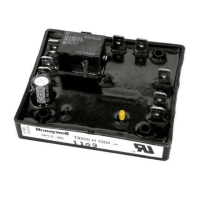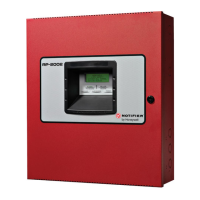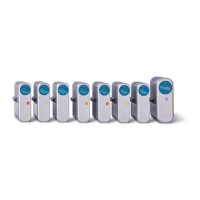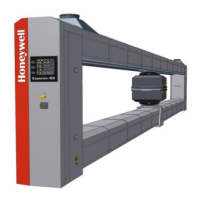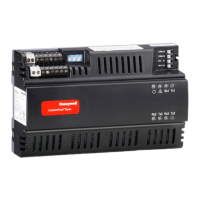Finally, two SM-810 Servos are included to
These hiqh-reliability servos each consist
drive the throttles.
of a servo motor, qear
train, electrical eng~ge clutch, mechanical slip clutch, and ~ drum
grooved
for aircraft cable.
The dual-servo configuration allows
accurate and independent thrust setting on both engines in takeoff,
go-around, and flight level change modes. Synchronization of engine
rotor speeds,
side to side, is made possible by independent control
of each throttle. When the autothrottle is engaged, the PZ-800
Performance Computer outputs analog rate commands to the servos to
control thrust.
Hardware and software monitoring is used to ensure
the health of the system.
4.
c. (4) Autothrottle Modes
Autothrottle modes
are closely tied to flight guidance modes and can
also be influenced by the flight management system (navigation and
performance computers).
Basically, the autothrottle sets engine
thrust for takeoff, flight level change (FLCH), and go-around
modes.
At all other times it controls airspeed.
The best way to describe autothrottle modes is to step through a
typical flight and discuss system operation along the way. Figure
265 gives an outline of flight guidance and autothrottle modes for
each phase of flight.
(a) Takeoff
As the aircraft taxis out to the runway for takeoff, the pilot
enables the autothrottle system by pressing the arm button on
the flight guidance controller. Takeoff mode is selected by
pressing the takeoff/go-around button on either throttle. Once
the aircraft has been cleared for takeoff, the pilot moves the
throttles above a minimum engine pressure ratio (EPR) threshold
and engages the autothrottle. Throttles are automatically
advanced to the required engine power setting for takeoff. The
PZ-800 Performance Computer has data stored internally to
determine the appropriate EPR for a full-power takeoff (as a
function of altitude and temperature). However, if a reduced
thrust flex takeoff has been selected, the performance computer
does the necessary computations and supplies the EPR value to
the autothrottle or the pilot could dial in a manual EPR value
through the DC-884 Display Controller.
Each throttle is driven independently by a separate servo which
allows accurate closed-loop EPR control of both engines. At 60
knots, the servos are depowered and remain in throttle-hold
until the aircraft has climbed to at least 400 feet above
ground level. An indication of the throttle-hold condition is
displayed to the pilot and monitored by the FC-880 Fault
Warning Computer. The servos are repowered, above 400 feet,
when a mode other than takeoff has been selected by the pilot
or ASEL is automatically captured.
22-14-00
Page 298.180
Apr 15/93
Use or disclosure of informationon this page is subject to the restrictions onthe title page of this document.

